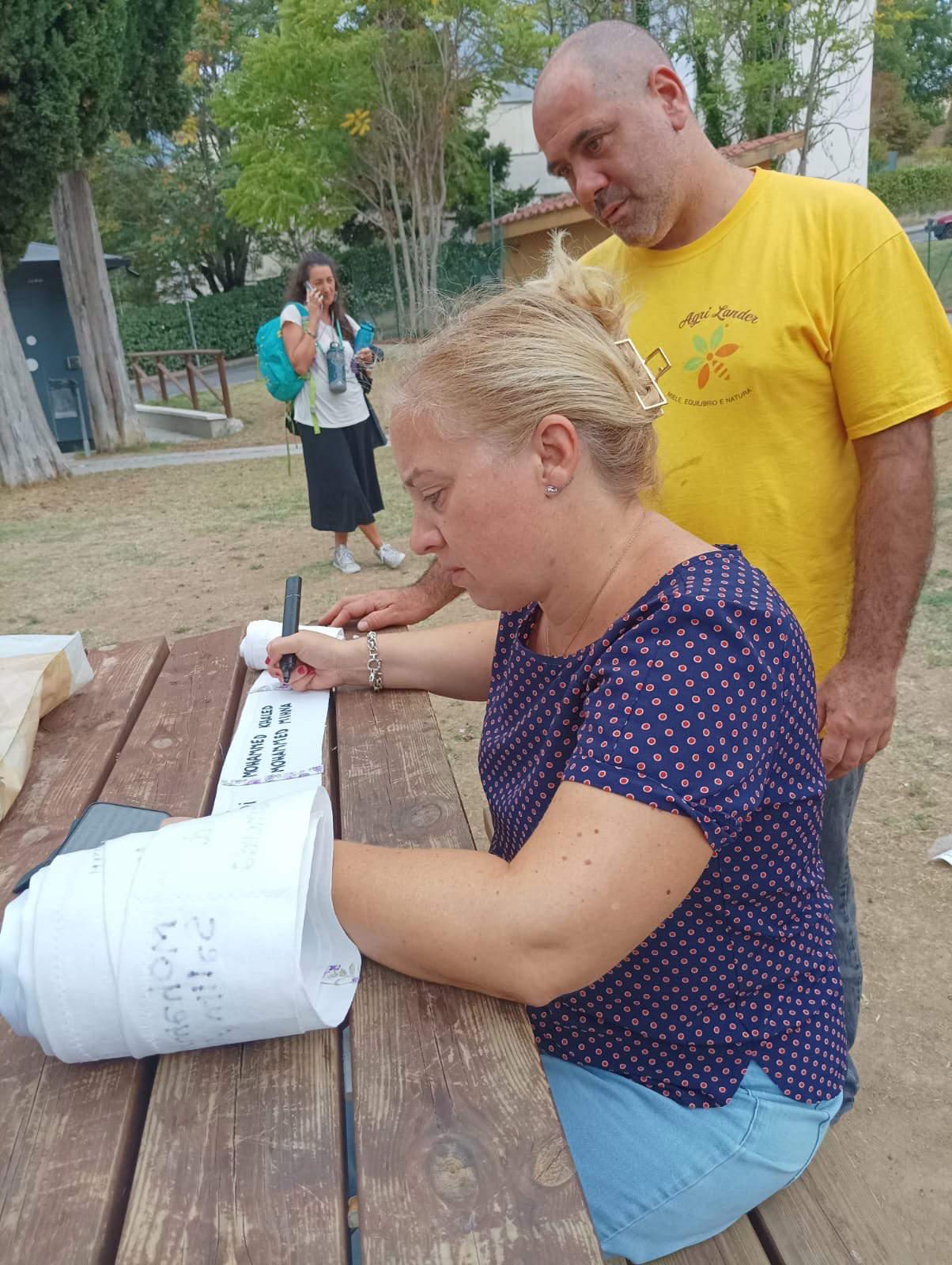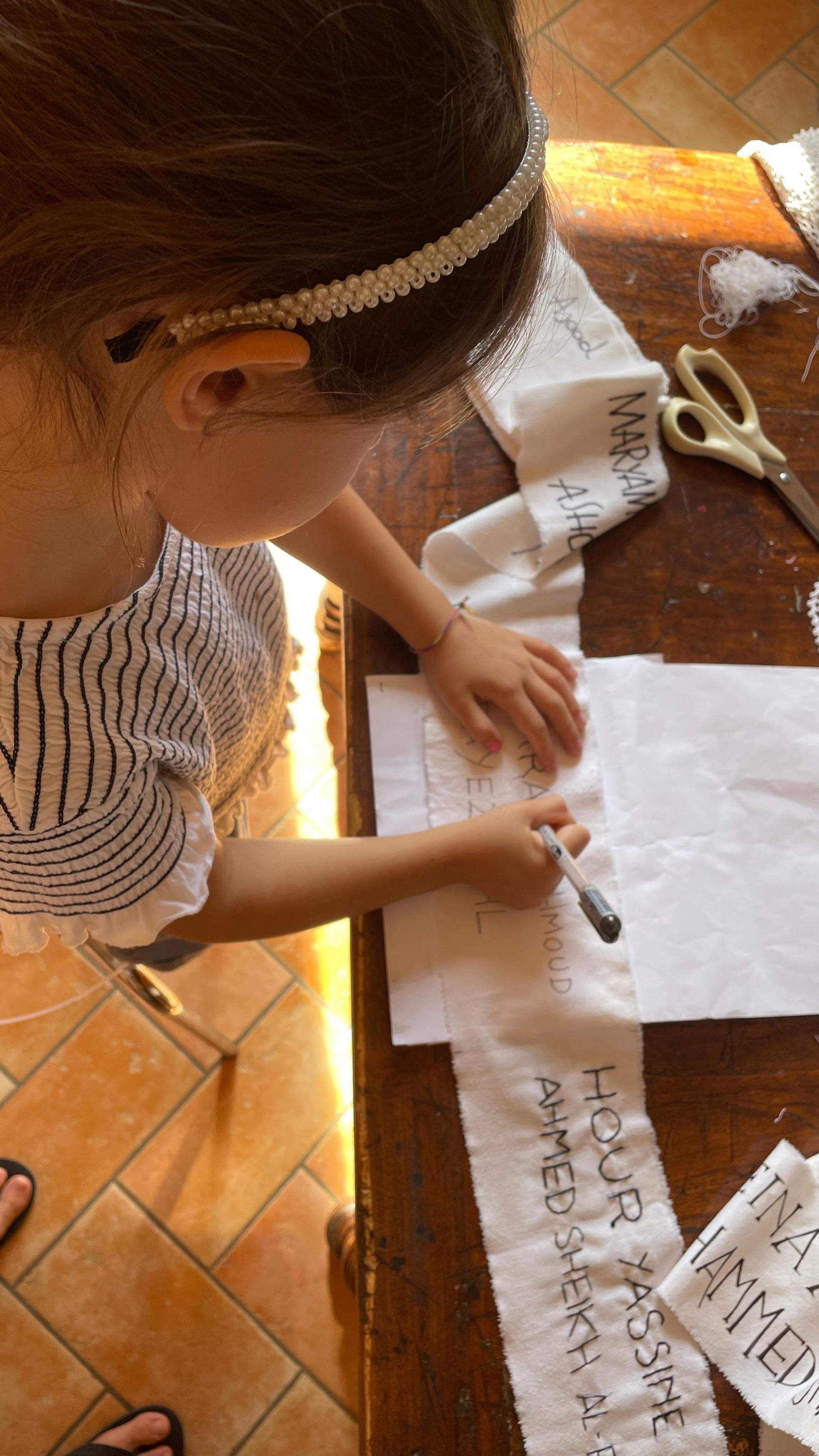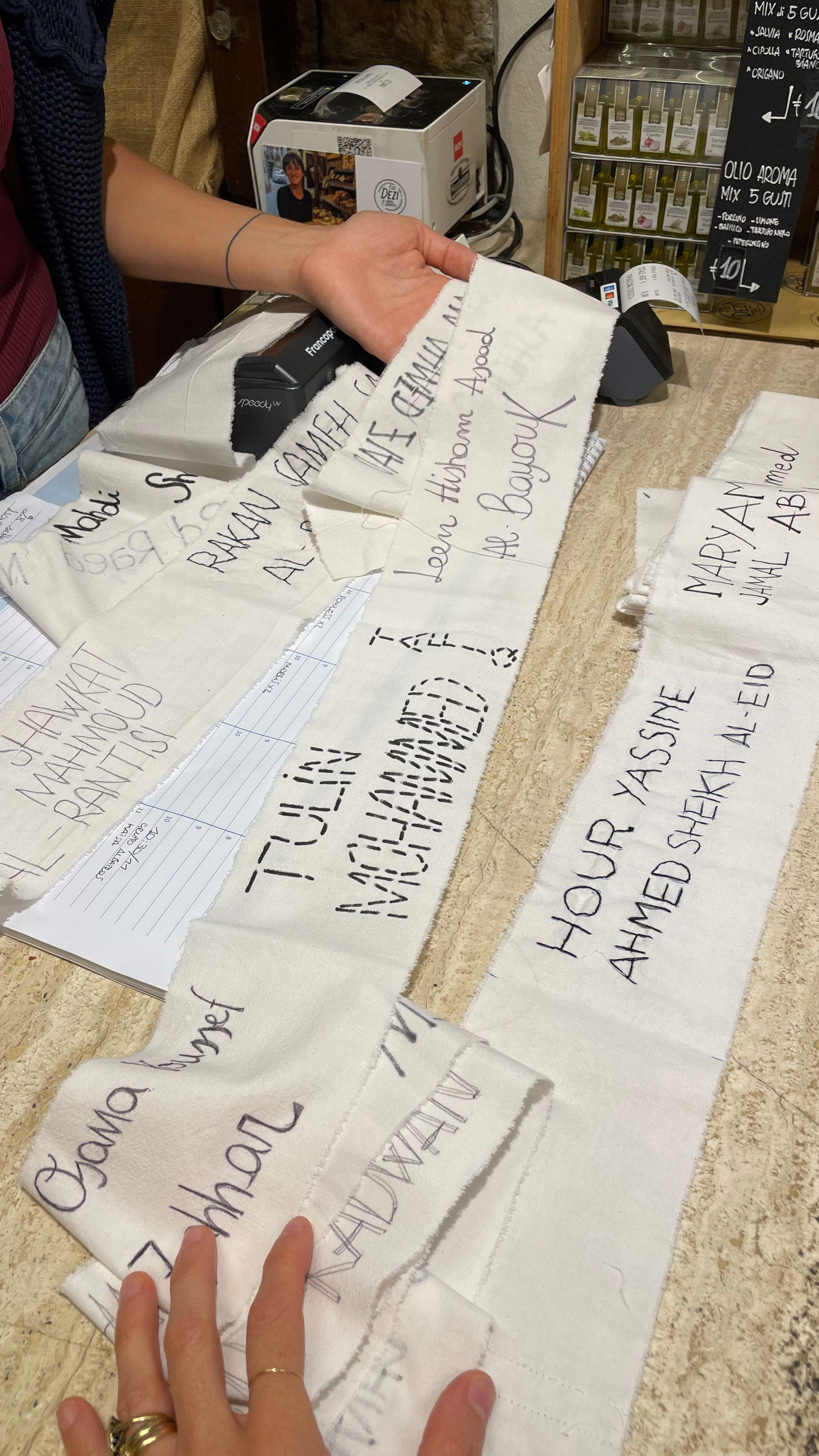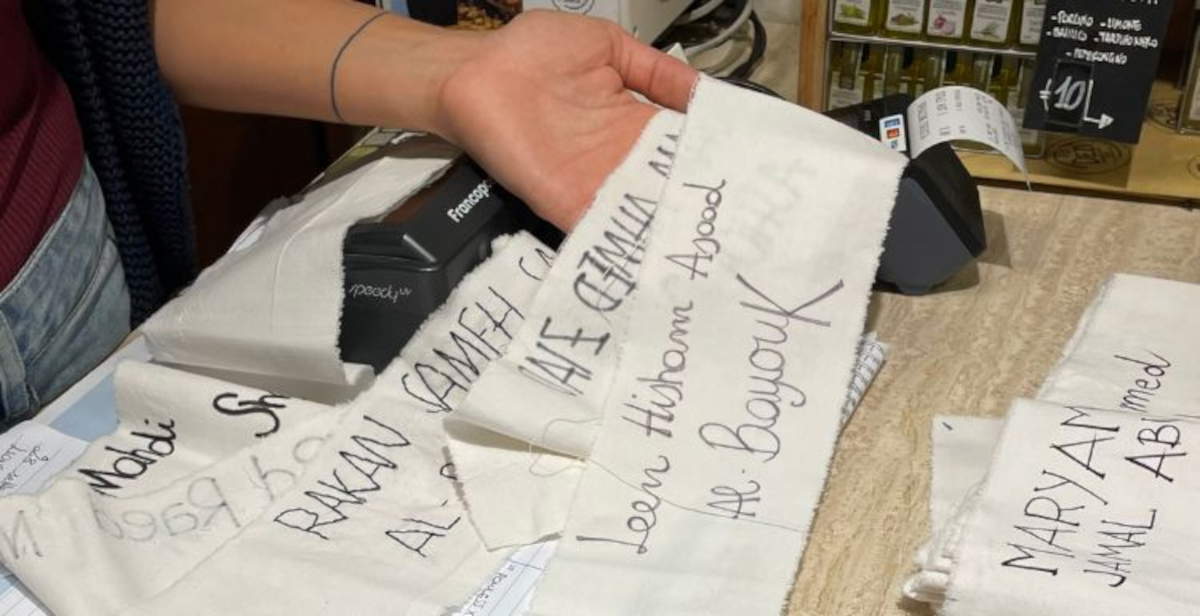A collective initiative of extraordinary dimensions aims to transform grief into concrete testimony. The textile project 5.7 kilometers of cries in silence, conceived by Cristina Pedrocco and Elena Gradara, was created with the aim of commemorating the thousands of Palestinian children victims of the conflict in Gaza. The name of the initiative summarizes the intent: a 5-kilometer-long, 700-meter-long ribbon that collects the silent voices of the youngest, snatched from life by the war. The work takes the form of a collective monument, the result of a broad and transversal participation, difficult to quantify, uniting artists, textile artisans, associations, collectives and ordinary citizens in a gesture of shared memory.
The dynamics of the project involves each participant devoting 60 days to writing, embroidering or painting the children’s names on small white fabric panels, each measuring 25x10 centimeters. These panels will later be sewn together by the project designers to form a single ribbon over five kilometers long. The work, in addition to being a symbolic gesture, is thus intended to make the young broken lives visible and restore their dignity. Once completed, the installation will be unrolled in a number of Italian squares and later given to a museum, foundation or future mausoleum, where it can serve a permanent memorial function.
The project is set against a backdrop of humanitarian emergency and serious civil rights violations. According to data released by the Hamas-controlled Gaza Ministry of Health and relayed by international news outlets such as Al Jazeera and The Washington Post, more than 60,000 Palestinians have lost their lives in the past two years, a third of whom were minors. Among them, about 1,000 children had not yet turned one year old. The main causes include shelling, gunfire, burial under rubble, and famine. The updated toll up to the end of August shows already dramatic figures, while the number of victims continues to grow by the hour, making clear the inability of official data to restore the true extent of the tragedy. In response to this reality, the 5.7 km of cries in silence project aims to offer a concrete form of solidarity and remembrance.
“Every name is a life that has been extinguished. Every name that has been entrusted to me is no longer erased. In the silence of the threads, their faces come back to life: every stitch embroidered is memory, every knot a cry that resists time,” says Francesca Fusari from Florence.
“I keep stitching the names of the children of Gaza who were killed. I don’t want the fabric to get dirty, I keep it on me, I want to cuddle them. My 50 children, just born and dead before they turned one year old. I feel that I am taking care of them somehow,” says Raffaella Zurlo from Pienza.
“I admit I couldn’t answer my son when he asked me what I was embroidering. It is an important and very strong project,” confesses Veronica of A Capo from Padua.



The call for artists Textile Artists for Gaza, launched Sept. 2, 2025 on Instagram, drew hundreds of sign-ups from all over Italy. Participants have begun working on individual textiles, creating segments of panels that, once assembled, will form the final work. The design of the panels takes into account a symbolic thread: the names of the children are arranged according to age groups, to highlight the different stages of broken lives and to imagine how those lives could have developed in a context of justice and peace.
The work represents not only an aesthetic gesture, but is shaped as a collective experience. Those who participate, through embroidering or painting names, come into direct contact with the memory of the murdered children, transforming the manual act into a gesture of care. Volunteer testimonies tell of the emotional intensity of the practice and the sense of responsibility in giving voice to those who can no longer speak. The tape, once displayed, will allow the public to see those names and recognize the dignity of the children, countering the indifference and silence that often accompany humanitarian tragedies.
“There is still a valid reason to get up in the morning, and it’s called humanity,” says Beatrice of Calico Bottega Sartoriale, Verona.
“We start reading the names and emotion overwhelms us. Each of them has been denied a future,” writes Rossella Concas ofManimieLab.
“This morning I realized the importance of a name,” says Camilla Bruzzi of Pollicenero. “A name is identity: it distinguishes us, it says ’here I am, it’s me.’ A name is recognition: when someone calls you, you exist. A name is memory: when it remains, it keeps the trace of a life alive. A name is history: it holds roots, origins, ties. And a name is presence: even after death, to speak it is to bring someone back into the world.”
Cristina Pedrocco, a Venetian textile artist and cultural activist, has a background in Ancient Near Eastern History and the Academy of Fine Arts. After experiences in the clothing industry, she founded the brand W.Camicie, making artist’s shirts with ancient fabrics and embroidery inspired by medieval and proto-modern iconography. Her work interweaves historical memory and contemporary urgency, addressing themes of social resistance, feminism and philosophy. Her works transform fabric into a narrative surface, restoring voice to forgotten figures and symbols to those who can no longer tell their stories.
Elena Gradara, a graduate in Fashion and Costume Studies, specializes in textile sustainability and the dissemination of natural dyeing techniques. Founder of the sustainable fashion brand Vagamente Retrò and co-founder of the Tintura Madre Collective, she collaborates with associations committed to ethical fashion and holds courses and master classes in Italian academies. Her experience contributes to the project with technical expertise and attention to the concrete impact of the materials used, valuing collective work and the ethical dimension of participation.
 |
| A 5.7 km ribbon to remember Palestinian children killed in Gaza |
Warning: the translation into English of the original Italian article was created using automatic tools. We undertake to review all articles, but we do not guarantee the total absence of inaccuracies in the translation due to the program. You can find the original by clicking on the ITA button. If you find any mistake,please contact us.